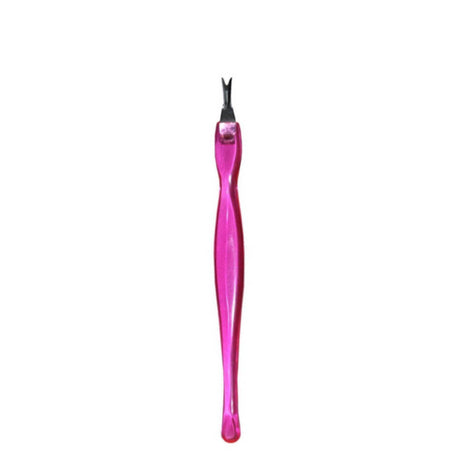Each of us’s hair has different needs. Hair care appropriate for their type guarantees that natural beauty is highlighted. The most expensive conditioners and shampoos will not help your hair if it is chosen incorrectly. Your care depends on the type of hair you have. What are the characteristics of individual hair types and how to care for them to be beautiful and healthy?
Hair care: balance have matters
Hair doesn't like exaggeration in any direction. Dryness and excessive moisturizing are harmful to them. Each hair is surrounded by sebum - a thin layer of fat, derived from the sebaceous glands, whose task is to prevent them from drying out. When these glands are too active and produce too much fat - water has no chance to evaporate and the hair sags. In turn, the complete removal of fat (e.g. by using the wrong shampoo) excessively dries the hair, which can immediately be seen by the fact that they become stiff and hard as straw.
Individual hair types - how to recognize and take care of them?
The method of hair care depends largely on the type of hair. However, how to recognize what hair we have and what cosmetics we should use? You get dandruff from your head, tired of having to wash greasy hair every day, can't you tame curls like a haystack? Before you buy another one, read!
Hair types: normal
They are always soft and elastic, they shine and are easy to arrange. They were not dyed or brightened. They are not dehydrated (after washing, they form) and do not grease quickly. How to care of them:
- Wash them regularly with shampoo for normal hair.
- After washing, use balms or conditioners.
- Use a highly regenerative conditioner once a month.
- In summer, make sure that all hair preparations that you use have sunscreen
Hair types: dry
Too little sebum (formed as a result of overproduction of sebaceous glands) leads to the fact that the level of humidity falls below the permissible minimum. As a result, the hair becomes stiff and hard. Sometimes they break even from a stronger gust of wind or when combing. And in addition, you need to work a lot on arranging a sensible hairstyle. Dry hair care:
- Wash them every few days with shampoo only for dry or slightly damaged hair (usually contains strengthening ingredients).
- After each washing, use carefully selected balms and conditioners. Only by doing this will you improve your hair's elasticity, nourish and regenerate it.
- If you can, give up the dryer when drying your hair.
Hair types: damaged
All chemical and mechanical treatments, as well as excess sun and wind have led to the fact that the hair is dry, usually dull, breaks and breaks easily. When you see such a hair under a microscope, it will look like a string that has been washed in many places. When you start caring for them properly, you'll remember the flexibility of healthy hair. Damaged hair care:
- Wash your hair only with special shampoos, contain active substances (e.g. panthenol, proteins) that penetrate the hair and regenerate damaged sections, as well as smooth its surface, and in the case of dyed hair support the color.
- It is mandatory to use balms and conditioners after each wash, preferably from the same series as the shampoo.
- Use a comb with large, rarely spaced teeth to comb your hair.
Hair types: hair with dandruff
White or slightly yellowish petals spill from the head. In general, it can be said that this is the effect of disruption of the natural process of epidermal renewal. The speed of reaction is also important here - the dandruff-covered scalp is an ideal breeding ground for bacteria and fungi, and their feeding feels as unpleasant itching. Hair care with dandruff:
- Wash your head with anti-dandruff shampoo at least twice a week.
- While washing, massage the head strongly (but do not scratch it!), Which will help detach the dandruff scales.
- Rinse it for a long time with water that is not too hot.
- When you get rid of the problem, reach for anti-dandruff shampoo once every two weeks. Just in case.
- When, after 4-6 weeks of using a special shampoo, dandruff continues to spill - be sure to go to a dermatologist.
Hair types: oily
Too thick sebum, formed as a result of overproduction of sebaceous glands, does not allow excess water accumulated in the hair to evaporate, as a result of which they lose their fluffiness, become limp and difficult to style. And sometimes a few hours after washing. Such hair requires special care, which primarily consists of avoiding irritation of the scalp. Oily hair care:
- You can't afford to rub the hair too much with a towel when wiping.
- Forget about brushing brushing and washing them in hot water.
- Also, avoid low-quality shampoos, as there is a risk that they will chemically irritate the scalp.
- Do not wear tight hats and scarves.
- You can take it easy: wash your hair even daily, provided you use a mild shampoo, especially for oily hair, use balms or conditioners, preferably from the same series as the shampoo.
What to remember
No matter what type of hair we have and in what condition they are, during their daily care you should remember the principle of the golden mean, to use even the best cosmetics in moderation and common sense, listen to your hair, closely watch their condition after changing the shampoo, nutrients, or the entire care series and not always be inspired by the opinions of friends or acquaintances, because often what works sensational in one case does not bring the same results to another person.



















